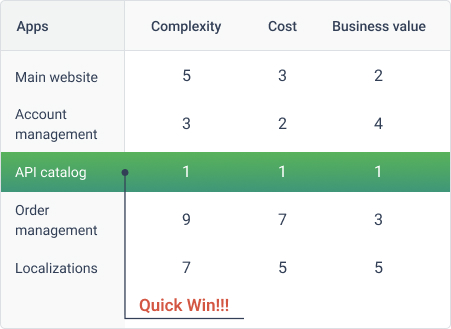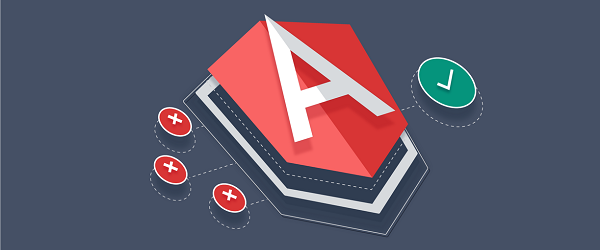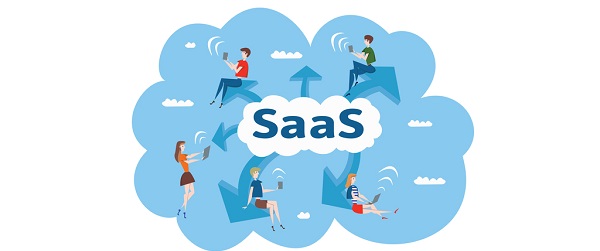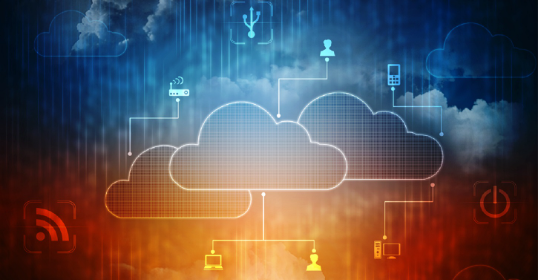Cutting legacy costs may be achieved by removing duplicate software, eliminating payments for infrastructure licenses, offshoring some tasks without sacrificing productivity, and redeploying workforce. However, the key question is there a strategic approach to digital transformation that allows CIOs to reduce costs in the process of app modernization?
Incremental Modernization
Progress in application modernization can be achieved with less funding. Modernization projects don't have to be expensive and risky.
Complex on-premises applications can be modernized incrementally. A complete application rewrite with a massive budget or migrating the entire system to the cloud isn't the only way forward.
This systematic and fact-based method focuses on modifying organization-critical applications through a series of smaller, well-defined projects that require fewer resources. By breaking transformation projects into smaller chunks, each improvement can build upon the previous one. Change can be recognized more swiftly, allowing the organization adequate time to adapt.

The entire application can be modernized using the incremental approach. At the technology stack level each increment adds modernized code which decreases the percentage of legacy code. Eventually, the legacy system will become completely modernized.

01. Integration Modernization
During application modernization, it's imperative that the system remains fully operational. Relying on the legacy system while awaiting the development of a new one is not feasible. Benefits from modernization must be seen in months, not years, preventing team exhaustion and reducing anxiety within the organization.
This is where the API-first modernization approach steps in. We design custom APIs specifically for the current system's critical components and integrate it with cloud-based solutions, thereby enhancing these legacy components' capabilities.
This allows the system to not only remain operational but also to immediately gain new features.
In many cases, existing integration software requires modernization. Legacy on-premise middleware, such as ETL tools, ESB frameworks, or point-to-point coding, is not well-suited for integration between cloud and in-house systems, introducing an inflexible and costly approach. Sometimes, it's also necessary to identify and remove redundant integrations as well as reduce the scaffolding code.
Our app modernization engineers build and run integration pipelines to connect any applications and any data. Using API capabilities of modern integration platform as a service (iPaaS), we connect legacy applications with mobile, social, IoT, and big data sources outside the firewalls of the enterprise.
02. Migrate Only Customizations, Not the Core, to Microservices
This principle is about application architecture and aims to separate core functionality from customizations. If only the customizations or special features are moved to separate microservices, then the change may not be as radical as a full transition to a microservices architecture for the entire application.
This makes it easier to update or replace these individual components without affecting the entire system.
Microservices are independently deployable, meaning they can be scaled up or down based on demand, leading to more efficient resource utilization. Migrating to microservices can enable faster development cycles.
Teams can work on different services simultaneously, enabling quicker deployments. Separating customizations from the core system into microservices makes it easier to troubleshoot and manage the application, thus improving maintainability.
Building Global Platform That Supports Local Customization
This is particularly relevant for enterprises operating across multiple regions or countries. This approach aims to standardize core functionalities while allowing for the flexibility to adapt to local needs, laws, or customer preferences.
The global platform would contain the core functionalities that are common across all markets. This could include things like basic product or service features, security protocols, data storage and management, etc. These elements are standardized to ensure consistency and efficiency.
On top of this global layer, you would build localized modules that can be plugged into the core platform. These modules could cater to region-specific requirements like language localization, currency conversion, tax calculations, or even market-specific features.
Technologically, this could be achieved through a modular architecture or microservices that allow for independent deployment of localized features. APIs could be used to facilitate interaction between the core platform and the localized modules.
The core platform can be updated or scaled without affecting the localized modules. Ensures that regardless of the location, the core functionalities and user experience remain consistent. The architecture allows for quick adaptations to local market conditions, regulatory changes, or customer preferences. Common functionalities are developed and maintained centrally, reducing duplication of effort.
03. Modernizing Critical User Journeys First
Such modernization efforts focus on the most important and frequently used workflows in an application, to maximize the impact in terms of user satisfaction, productivity, and overall ROI.
It refers to the modernization of critical "journeys" or workflows, a series of interactions that users undertake to complete a specific task within the application.
For instance, in a project management application, a critical user journey might involve the steps to create a new project, assign team members, and allocate resources. This journey is "critical" because it is essential for the core functionality of the application and directly impacts user productivity and satisfaction. If this function is slow and users (either customers or employees) are mostly frustrated with it, this feature will be prioritized in the initial scope.
The risks associated with the modernization are easier to manage because the scope is limited to specific, well-defined areas of the application.
In contrast, arbitrary modernization refers to the practice of updating or upgrading systems across various aspects of a system, rather than targeting specific areas that need improvement. For example, a company might decide to update its entire software stack simply because some of the technologies are perceived as outdated. However, this approach can be costly, and not deliver the expected returns, as not all parts of the system necessarily require updating or might not be critical to business operations or customer experience.
04. Moving Non-Differentiating Functions From Core App to Specialized 3-Party SaaS/PaaS Solutions
While SaaS usually replaces a particular function or application entirely, PaaS provides the building blocks that allow you to more easily develop and manage your own custom applications.
For instance, if your in-house application has a reporting feature that requires a specific database and server setup, rather than maintaining this internally, you can offload this to a PaaS solution that provides the necessary database and server resources. This allows your team to focus solely on the logic and user interface of the reporting feature itself.
Maintaining in-house solutions for non-core functions can be expensive. By moving non-essential tasks to third-party services, a business can focus more on what it does best, whether that's product development, customer service, or another core competency.
Third-party solutions are plug-and-play to accelerate development cycles and help get products or features to market faster.
SaaS and PaaS solutions are generally built to be scalable, allowing companies to easily expand or contract usage based on needs, without the complex and costly process of altering in-house systems.
Third-party providers often invest in security and compliance measures, and meet industry standards.
Using third-party solutions means you don't have to worry about the upkeep of the software. Updates, security patches, and new features are handled by the service provider.
Rate this article
Recommended posts
Portfolio
Our Clients' Feedback







































Belitsoft has been the driving force behind several of our software development projects within the last few years. This company demonstrates high professionalism in their work approach. They have continuously proved to be ready to go the extra mile. We are very happy with Belitsoft, and in a position to strongly recommend them for software development and support as a most reliable and fully transparent partner focused on long term business relationships.
Global Head of Commercial Development L&D at Technicolor